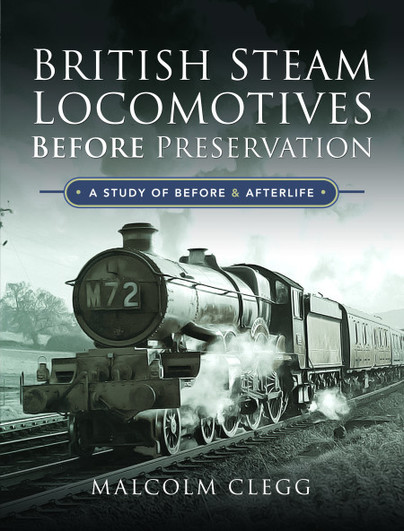Meet the author: Malcolm Clegg
Today on the blog we have an exclusive interview with Malcolm Clegg. Here Malcolm tells us more about his upcoming release British Steam Locomotives Before Preservation.
What is the book about?
The book, as the title suggests is about British steam locomotives which have been preserved. The photographs in the book show steam locomotives during the time they were under British Railways ownership and the text gives details about each particular locomotive.
The book also explains when and why each locomotive was preserved after being withdrawn from BR service. It explains what happened to each locomotive during their subsequent years in preservation, together with their current status and whereabouts.
What inspired you to write it?
As far as I am aware, not many books have been written on this topic and I considered that it would be of interest.
Who will the book appeal to?
Anyone wishing to read it but in particular, it should appeal to steam enthusiasts, railway enthusiasts and historians.
What interesting facts have you uncovered during your research?
I have had a lifelong interested in steam engines and have a reasonably good knowledge on the subject. All the facts which I uncovered were of interest to me and were pretty much was I expected to find.
What research have you done?
Research was carried out into the development and introduction of all the locomotives pictured in this book. Also research as to when and where they were built and the places where they worked. Some technical and miscellaneous information obtained by way of research is also included.
All research was sourced from books and various internet web sites.
Have you been able to access any primary source material?
This has not been necessary.
What was the hardest part about writing this book?
I did not experience any particular ‘hard part’. The most time consuming, by far, was the research carried out to find out the relevant information about each individual locomotive.
If you have used illustrations where did they come from?
The book contains a total of 160 photographs of steam locomotives which are all from my own personal collection of photographs (taken by me in the 1960s) or from the private collection of Mr Peter Cookson, a retired schoolmaster and railway historian.
Is there a unique angle to this book and if so, what is it?
There is no specific unique angle to this book, although the book gives a comprehensive list all of all standard gauge preserved steam locomotives in Britain. The list does NOT however extend to industrial locomotives, narrow gauge locomotives, broad gauge locomotives or what are referred to as ‘new build’ steam locomotives (replicas), as they are outside the remit of this book. Some however are referred to in the book.
How long is the book? Why that length?
The book consists of 167 pages which was required to include all the photographs and appropriate text.
Why do you think you were qualified to write the book?
I wrote the book out of interest, pleasure and as a means of displaying and sharing a number of previously un-published photographs with like-minded enthusiasts and other members of the public.
What has researching this book taught you?
The research uncovered is precisely what I expected, although it highlighted the fact that the successful preservation of steam locomotives and our heritage railways is a testament to the hard work, dedication and financial contributions made by a vast number of enthusiasts and volunteers who have worked the heritage railways, tirelessly over many years, to preserve the history of steam locomotives and heritage railways themselves, in Britain, for future generations to enjoy.
What part of the book are you most proud of?
I am quite proud of having written a book that will (hopefully) be of interest and give pleasure to readers as well as promoting awareness of the preserved steam locomotives that exist in Britain, together with the heritage railways on which many of them operate.

British Steam Locomotives Before Preservation is available to preorder now.

